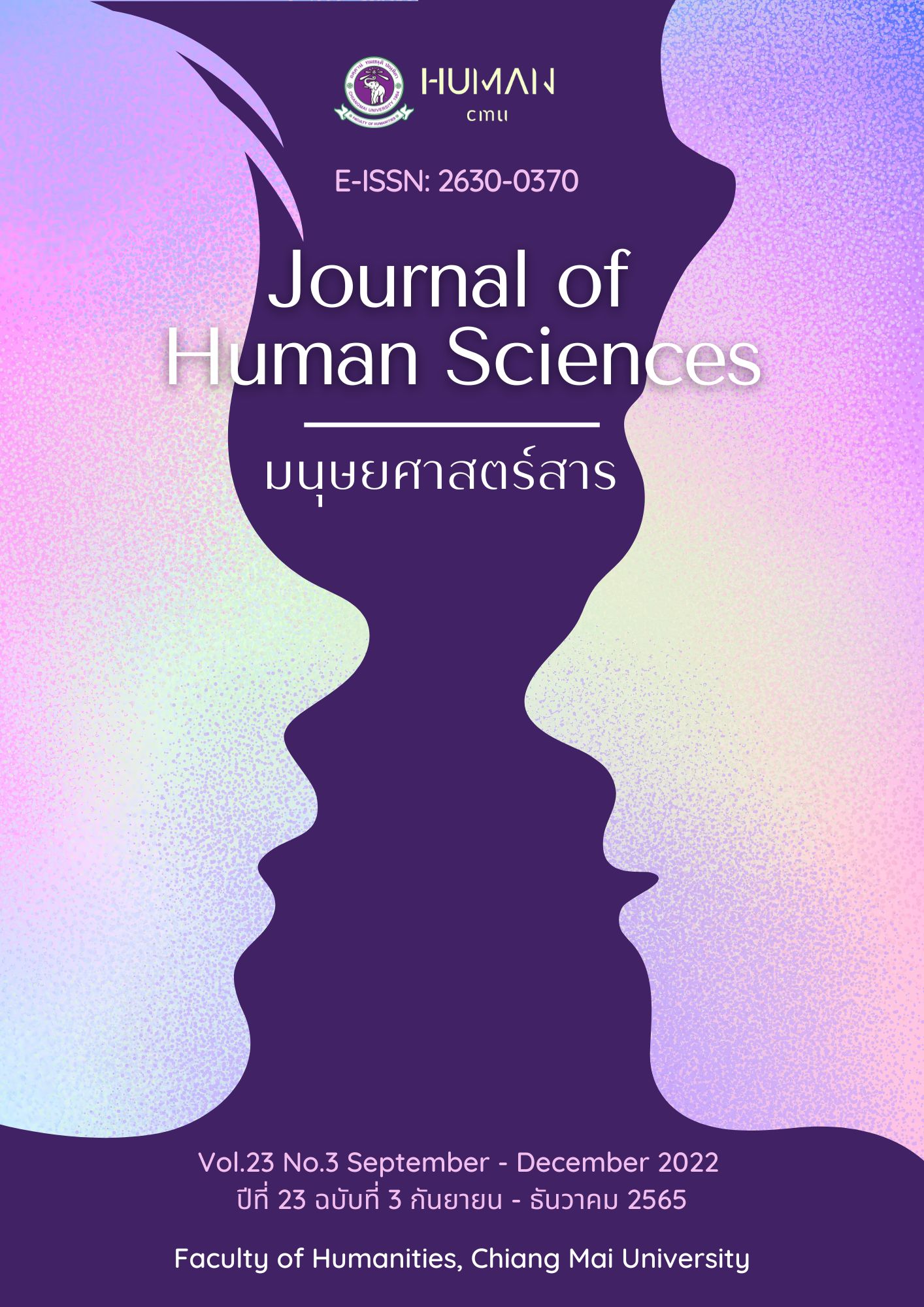ความ สำคัญของไข่มุกในตำรานีติศาสตร์อินเดีย มานโสลลาสะ
Main Article Content
บทคัดย่อ
บทความนี้มุ่งศึกษาบทประพันธ์คัดสรรเกี่ยวกับไข่มุกจากตำรานีติศาสตร์อินเดียภาษาสันสกฤต
"มานโสลลาสะ" ซึ่งเชื่อกันว่าพระเจ้าโสเมศวระที่ 3 แห่งราชวงศ์จาลุกยะเป็นผู้ประพันธ์ บทประพันธ์นี้เป็นส่วนหนึ่งของบทบัญญัติว่าด้วยขุมทรัพย์ เนื้อหาสาระอธิบายความสำคัญของขุมทรัพย์ทางทะเลโดยอ้างถึงคติเรื่องมหาสมุทรในทางจักรวาลวิทยาและเทพปกรณัมฮินดู ประเด็นที่น่าสนใจคือ เนื้อหาของบทประพันธ์ช่วยเสริมมุมมองความคิดเรื่องคุณค่าของไข่มุกในศาสตร์แห่งอัญมณีอินเดียโบราณ สามารถอธิบายเหตุที่ทำให้ไข่มุกได้รับความนิยมอย่างสูงในวรรณคดีอินเดีย อีกทั้งยังสะท้อนความสำคัญของไข่มุกด้านเศรษฐกิจในสมัยของผู้ประพันธ์ นอกจากนี้ผู้เขียนบทความได้เสนอว่า สาระของคำอธิบายเรื่องขุมทรัพย์ทางทะเลอาจสัมพันธ์กับการกำหนดมาตรฐานการชั่งตวงวัดและราคาอัญมณี ซึ่งปรากฏเฉพาะในเรื่องการตรวจสอบไข่มุก (มุกตาปรีกษา) เพียงเรื่องเดียว ไม่พบในการตรวจสอบอัญมณีประเภทอื่น ในการศึกษาครั้งนี้ผู้เขียนได้สอบเทียบตัวบทงานนิพนธ์ดั้งเดิมที่เป็นฉบับพิมพ์ 2 ฉบับ และแปลเป็นภาษาไทย นำเสนอไว้ในบทความนี้ด้วยเพื่อประโยชน์ในทางวิชาการ
Article Details

อนุญาตภายใต้เงื่อนไข Creative Commons Attribution-NonCommercial-NoDerivatives 4.0 International License.
เอกสารอ้างอิง
Aiyangar, N. (1987). Essays on Indo-Aryan Mythology. New Delhi: Asian Educational Services.
Andrews, T. (1998). A Dictionary of Nature Myths: Legends of the Earth, Sea, and Sky. USA: Oxford University Press.
Bhattacharyya, P. K. (1977). Historical Geography of Madhyapradesh from Early Records. Delhi: Motilal Banarsidass.
Dalal, R. (2010). Hinduism: An Alphabetical Guide. India: Penguin Books India.
Daniélou, A. (1991). Myths and Gods of India: The Classic Work on Hindu Polytheism. India: Inner Traditions International.
Garg, G. R. (1992). Encyclopaedia of The Hindu World Volume 2 (Ak-Aq). New Delhi: Concept Publishing Company.
Kongmebhol, Aroonwan. (2019). Essence and Significance of Indian Lapidaries [Doctoral Dissertation]. Bangkok: Chulalongkorn University.
Macdonell, A. A. (1897). Vedic Mythology. Strassburg: Verlag Von Karl J. Trübner.
Santos, A. (2011). Atlantis: The Lost Continent Finally Found. USA: Atlantis Publications.
Williams, G. M. (2003). Handbook of Hindu Mythology. USA: Oxford University Press.
ภาคผนวก
คำอธิบายอักษรย่อ
อักษรโรมัน
cf. = confer, compare (เปรียบเทียบ)
En. = English (ภาษาอังกฤษ)
lit. = literal meaning (ความหมายตามรูปศัพท์)
ระบบการอ้างอิงวรรณคดีสันสกฤต
- มานโสลลาสะ และ อภิลษิตารถจินตามณิ ใช้ระบบ ปรกรณะ โศลก เช่น MU. 2.362 หมายถึง
มานโสลลาสะ ปรกรณะที่ 2 โศลกที่ 362
- ยุกติกัลปตรุ ใช้ระบบ หน้า : ลำดับคาถา เช่น YKT. 108:58–109:62 หมายถึง ยุกติกัลปตรุ หน้า 108 คาถาบทที่ 58 จนถึงหน้า 109 คาถาบทที่ 62
อักษรย่องานนิพนธ์สันสกฤตและแหล่งที่มา
AC. Abhilasitārtha-cintāmaṇi
Vidyalankara, A. V., & Sastry, S. (Eds.). (1926).
Abhilaṣitārthacintāmaṇi of Someśvara Deva Part 1 Prakaranas 1-3. Mysore:
The Government Branch Press.
BrP. Brahma Purāṇa
(1) Shastri, J. L. (Ed.). (1955). Ancient Indian Tradition & Mythology : Brahma Purāṇa
Part I (Vol. 33). Delhi: Motilal Banarsidass.
(2) Vyasadeva. ([n.d.]). Brahma Purāṇa Part I. Bombay: Venkateshwar Steam Press.
KūrP. Kūrma Purāṇa
(1) Shastri, J. L. (Ed.) (1981). Ancient Indian Tradition & Mythology :The Kūrma Purāṇa Part I (Vol. 20). Delhi: Motilal Banarsidass.
(2) Swaminathan, C. R. (Ed.) (2002). The Kūrmamahā-purāṇam. Delhi: Nag Publisher.
MU. Mānasollāsa of Someśvara
Shrigondekar, G. K. (Ed.). (1925). Mānasollāsa of King Someśvara (Vol. 1). Baroda: Luhana Mitra Printing.
Ṛtus. Ṛtusaṃhāra of Kālidāsa
Kale, M. R. (Ed.). (1967). The Ritusamhara of Kalidasa (2nd ed.). Delhi: Motilal Banarsidass.
VBS. Varāhamihira’s Bṛhatsaṃhitā
Bhat, M. R. (2003). Varāhamihira’s Bṛhat Saṃhitā Part Two. Delhi: Motilal Banarsidass.
ViS. Viṣṇusmṛti
(1) Jolly, J. (Ed.) (1962). Viṣṇu Smṛti (The Institute of Viṣṇu Together with Extracts from the Sanskrit Commentary of Nanda Paṇḍit Called Vaijayanti. Varanasi:
The Chowkhamba Sanskrit Series Office.
(2) Müller, F. M. (Ed.) (1990). The Institute of Viṣṇu. New Delhi: Atlantic Publishers & Distributors.
YKT. Yukti-Kalpataru of Bhojarāja
Sastri, P. I. C. Ed.. (1917). yuktikalpataruḥ mahārāja-śrībhoja-viracitaḥ
(Yuktikalpataru by King Bhoja). Calcutta: Siddheswar Machine Press.
also Kongmebhol, Aroonwan. (2018). “Sarattha lae Khwam Samkhan khong Sat
Haeng Anyamani India Boran” [Essence and Significance of Ancient Indian
Lapidaries]. PhD thesis, Chulalongkorn University. (Appendix C pp. 160-282)


